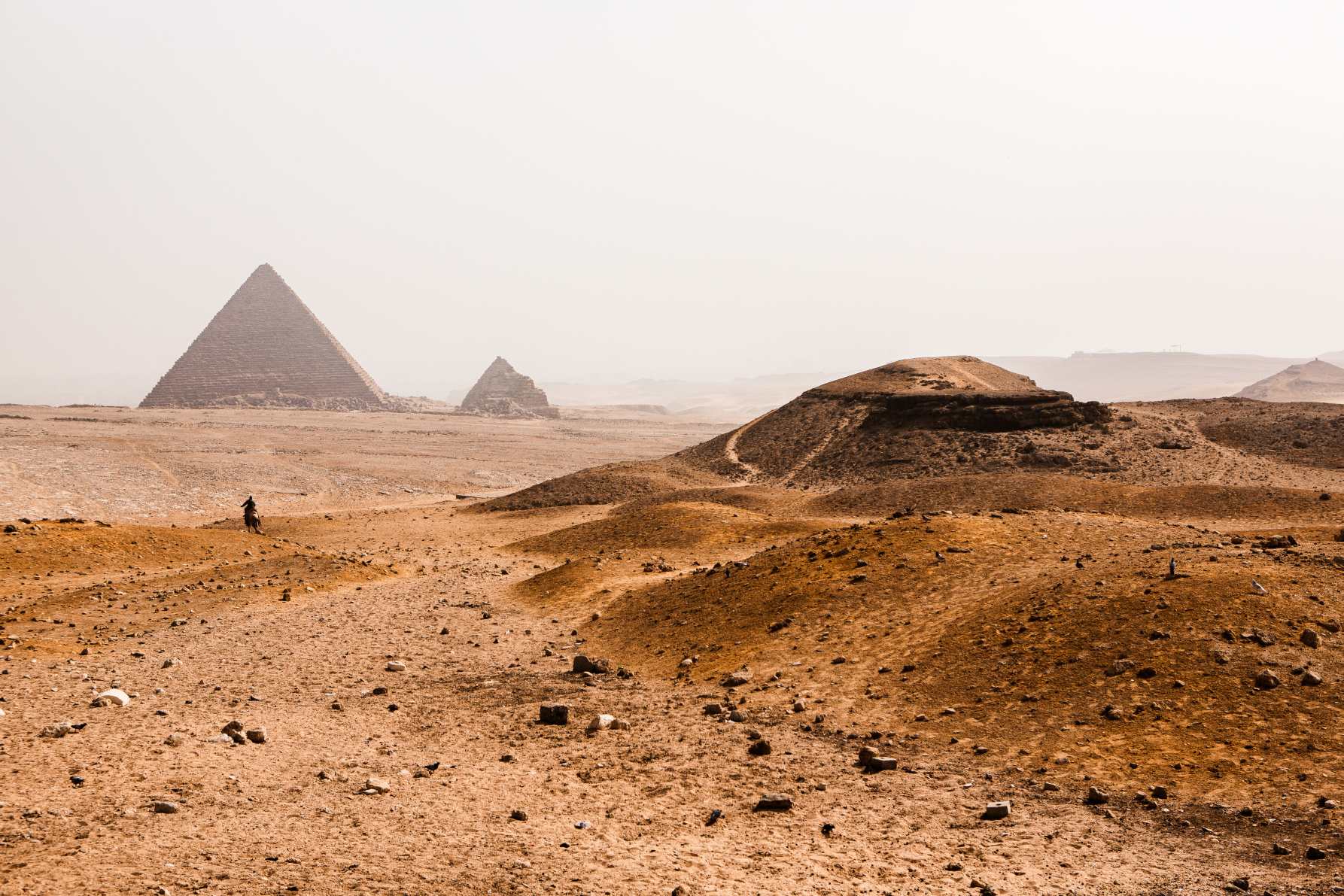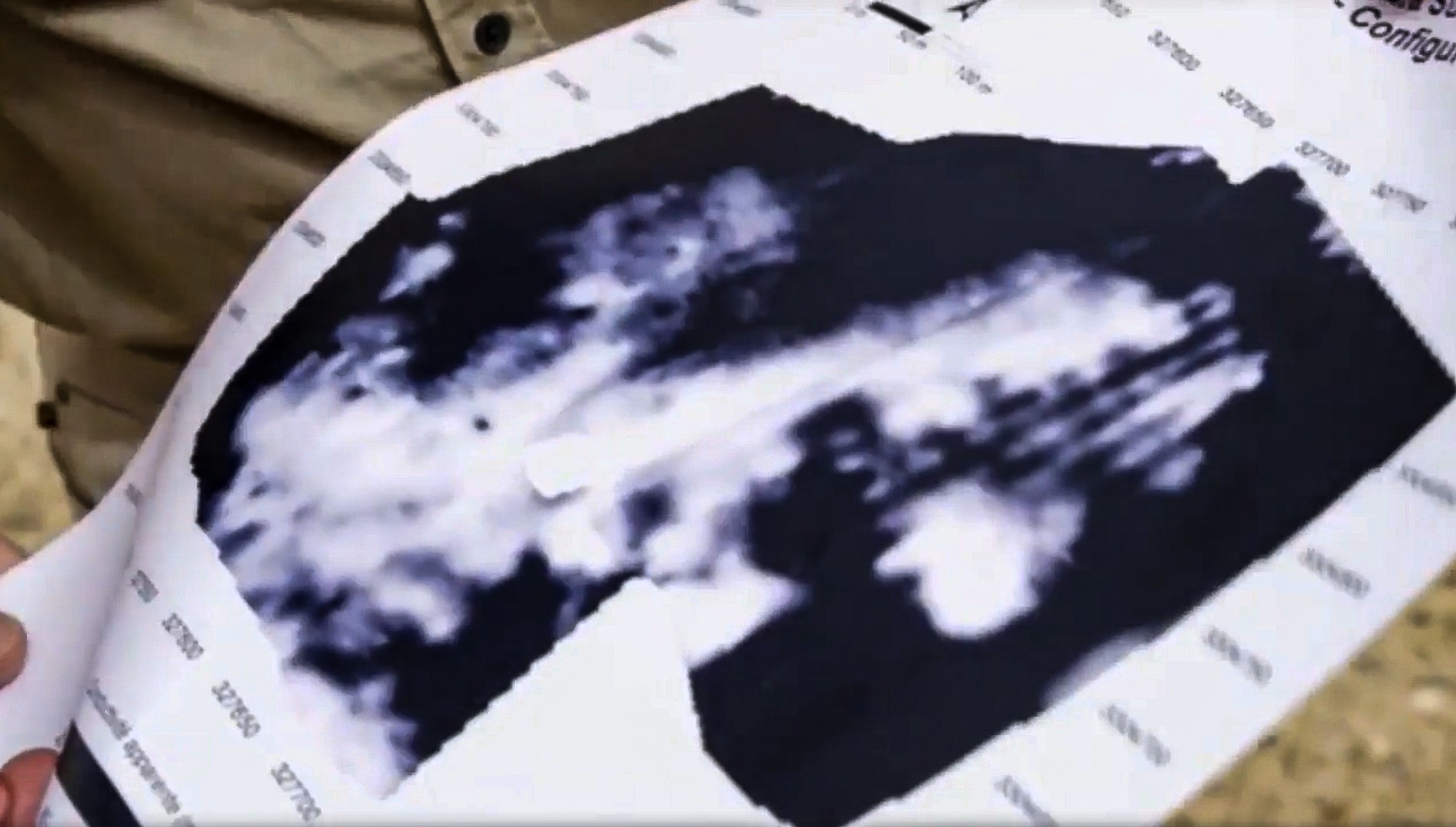The ancient burial site, where the new pyramid was allegedly discovered, served as the necropolis for Memphis and is home to numerous other pyramids.
 © Shutterstock
© Shutterstock
The Sahara is one of the driest regions on Earth, but once upon a time, it was a lush green land with rivers and lakes. It’s also home to one of the largest deserts in the world. But even so, there are still some things that are stranger than fiction about this place. For example, have you ever heard of an ancient pyramid still hidden beneath the sands?
In the dry and desolate sands of the Sahara Desert, scattered remains of ancient civilizations can be found if you look hard enough. Even so, most people wouldn’t expect to find a hidden pyramid among them. But that’s exactly what an archaeologist named Dr. Vasko Dobrev recently claimed to have discovered.
The discovery of the new pyramid in Sahara desert
 Dr. Dobrev explains to Tony Robinson the location in Saqqara © Channel 5
Dr. Dobrev explains to Tony Robinson the location in Saqqara © Channel 5
For the past three decades, Dr. Vasko Dobrev has been exploring the region approximately 19 miles from the famed Giza Pyramids. His incredible discoveries were made public in early 2019 during Tony Robinson’s “Opening Egypt’s Great Tomb” documentary on Channel 5. Dobrev believes that he has discovered a forgotten pyramid in the Sahara Desert.
The ancient burial site, where the new pyramid was allegedly discovered, served as the necropolis for Memphis and is home to numerous pyramids, including one that stands out among all others: The Step Pyramid of Djoser.
 The step pyramid of the ancient Egyptian king Djoser. © Image Credit: Walter Stiedenroth | Licensed from DreamsTime.com (Editorial Use Stock Photo, ID:216602360)
The step pyramid of the ancient Egyptian king Djoser. © Image Credit: Walter Stiedenroth | Licensed from DreamsTime.com (Editorial Use Stock Photo, ID:216602360)
“I’ve been nearly 400 kilometers north of Aswan, but this is no sightseeing tour. Dr Vasko Dobrev has been working in the desert outside Cairo for the past 30 years and he’s on the hunt for a new pyramid.
Often we only think of the famous pyramids of Giza, but this site called Saqqara boasts the first pyramid and a great many more.
Pyramids here spanned six centuries of Egyptian history, but one dynasty of pharaohs, in particular, chose to build their magnificent tombs in Saqqara,” said Mr. Tony Robinson.
When Dr. Dobrev explained to Mr Robinson how numerous pyramids could be buried beneath the sand, Mr. Robinson was just astounded.
He said: “There are about 120 pyramids all around Egypt. Pharaohs built pyramids here because Saqqara is exactly in front of the capital of Egypt, Memphis. You see this small pyramid? This is Pepi II, his father is here, his great grandfather is just behind and all the family is around.”
The two then made their way to the summit of a level plateau, which is where Dr. Dobrev thinks there may be an undiscovered pyramid.
Dr.told Mr Robinson: “Maybe we have (below us) the Pharaoh Userkare, he did not reign for a long time, maybe three or four years. He could not finish a 52-meter-high pyramid in three years. He may have only had time to create the pyramid base. We are on a good height, we discovered that all the pyramids that are in Saqqara, they are on the same level.”
 Geophysical Scanning of the entire area show signs of pyramids in the desert. © Channel 5
Geophysical Scanning of the entire area show signs of pyramids in the desert. © Channel 5
After that, he presented the evidence that he had gathered to back up his assertion. Dr. Dobrev added: “So there is a kind of pyramid level and we have his father to the north, his son is just there and his grandson is behind us. But we have something else, new technology, geophysics, shows something with right angles. This is not naturally made, we have a kind of square here, 80 by 80 meters, which is exactly the size of the pyramids of that period.”
In the same series, Mr. Robinson in Aswan was astonished by an “unexpected” discovery. After examining the inscriptions there, archaeologist Professor Abdel Monem speculated that it might have been Imhotep’s tomb.
Final words
Despite the fact that this information is quite some time old, there is currently no sign of any plans to excavate and further study the area where the alleged pyramid would be. Therefore, it is still unclear what the true purpose of this pyramid could be, but it has definitely stirred up excitement in the independent archaeological research community.
With more research, we may be able to unlock the secrets of Sahara necropolis and learn more about our mysterious ancient ancestors.
Sources:express.co.uk








